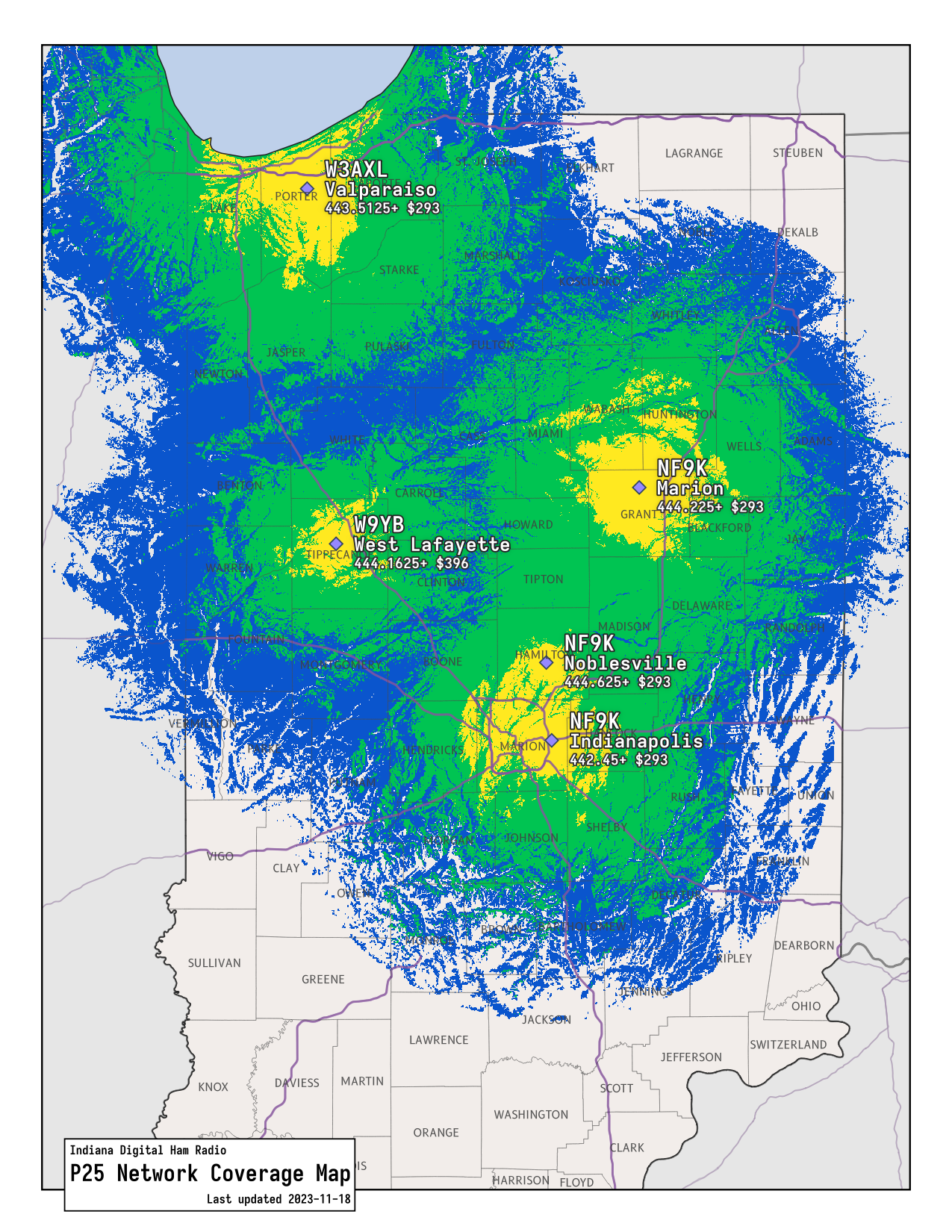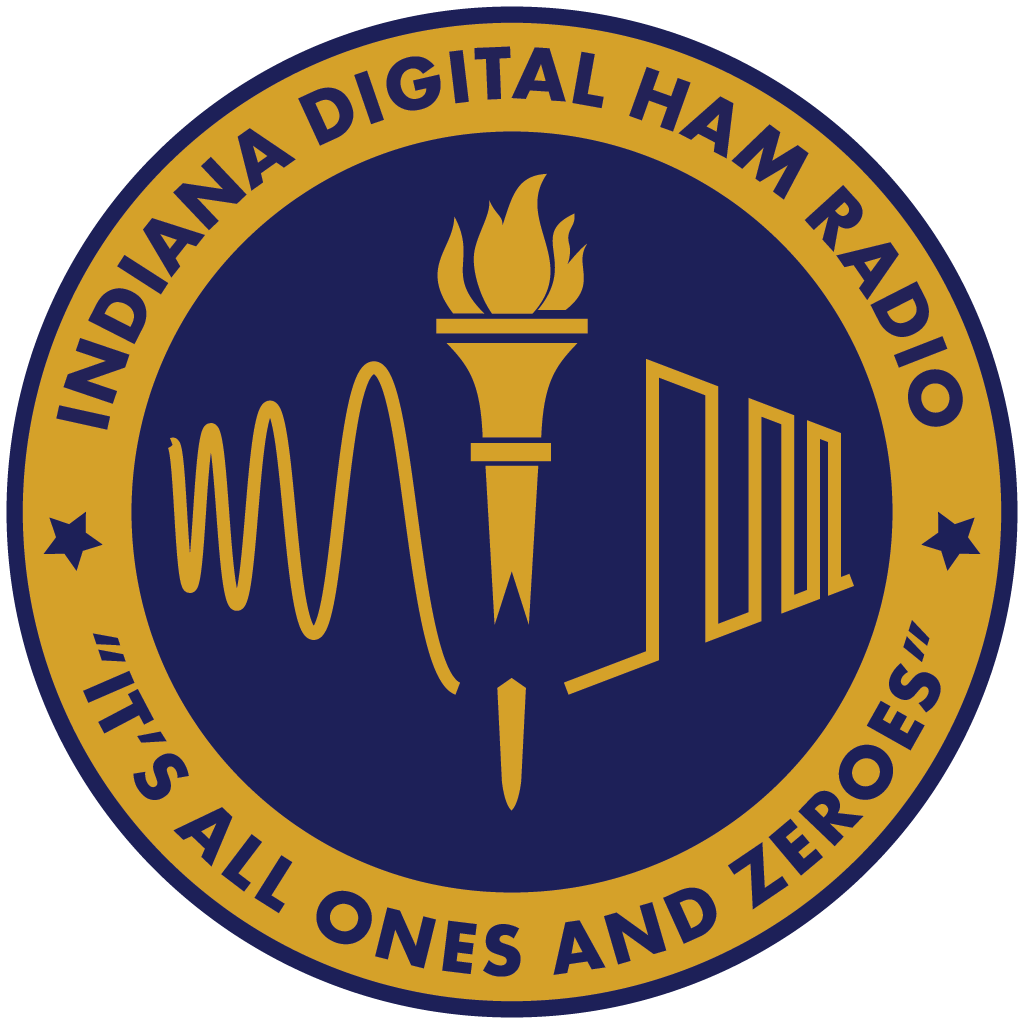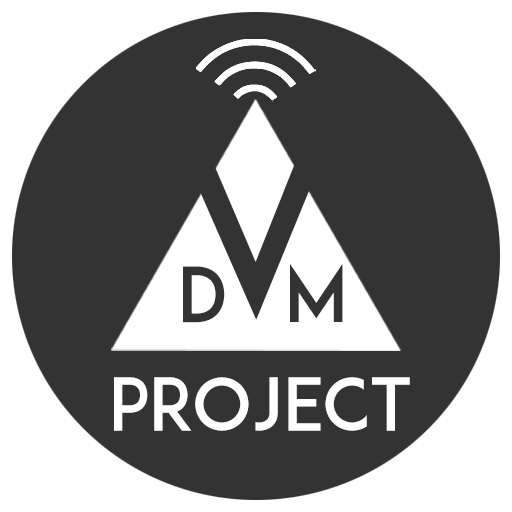Welcome to the Indiana P25 Network
We are a group of digital radio enthusiasts building a statewide amateur P25 system. Originally started in 2017 with the linking of the NF9K and W9SMJ P25 systems, the IDHR P25 network has been modernized and expanded to be even more user friendly.
Current System Coverage

The above coverage map was generated using the ITM propagation model. Yellow denotes portable coverage, green mobile coverage, and blue base station coverage.
Network Status
Network status is updated on page load/refresh based on the current connection status to the Indiana P25 core.
Site IdentitySite Location
| Callsign | AB1CD |
| Frequency | 442.2500+ |
| NAC | $293 |
| Status | Unknown |
Radio Programming
The Indiana P25 network has been simplified for a good blend of flexibility and ease of radio programming. Every repeater site has both Statewide and Local talkgroups, where conversations on the local talkgroup will override any traffic on the statewide link. Additionally, a Parrot talkgroup is available for testing your radios, and several additional TAC channels can be linked to peer systems for various special events.
Talkgroups
| TGID (dec) | Short Name | Long Name | Description |
|---|---|---|---|
| 0002 | LOCAL | Site Local | Site-specific local communication, does not connect to other repeaters |
| 3118 | IN-STATE | IN Statewide | Statewide talkgroup, received by all repeaters on the linked system |
| 9990 | PARROT | Parrot | Parrot talkgroup. Will repeat your transmission back to you. Please don't abuse this! |
| 31181 | IN-TAC1 | Indiana Tac 1 | Special talkgroup for patches, interop, or other special events. Can be dynamically linked to specific repeaters/sites |
| 31182 | IN-TAC2 | Indiana Tac 2 | |
| 31183 | IN-TAC3 | Indiana Tac 3 | |
| 31184 | IN-TAC4 | Indiana Tac 4 | |
| 31185 | IN-TAC5 | Indiana Tac 5 |
Programming
There are two recommended ways to program your radio for the P25 network: strapped talkgroups or selectable talkgroups. Both methods have their benefits and drawbacks, so it's up to you to decide the best fit for your radio operating style.
Strapped Talkgroups
Using strapped talkgroups can ensure that you always know which talkgroup your radio is transmitting/receiving on. However, it comes with the downside of additional channel space per repeater - you need a dedicated channel for each talkgroup you want to use.
Selectable Talkgroups
Using selectable talkgroups allows for only a single radio channel per repeater, but can cause confusion as not all radios plainly identify the talkgroup they're receiving/transmitting on.
Radio IDs
The IDHR network does not maintain a list of registered radio IDs at this time. It is recommended that you use a DMR ID, like those provided by RadioID.net to avoid duplicating IDs with another user on the network.
About the Network
The IDHR P25 system is proudly powered by the open-source DVMProject, utilizing the converged FNE as our network core and DVMDFSI at each site (both part of the DVMHost software suite). The majority of sites are running Motorola Quantar base stations, however any hardware that supports a DVMProject hardware stack can be used and linked into the system with minimal effort.
System Administrators
- Bill Atkinson, NF9K
- Patrick McDonnell, W3AXL
Joining the Network
The IDHR network is always looking to expand! Are you a repeater owner in Indiana looking to join the IDHR P25 network? Depending on the hardware you're running, it could be as easy as plugging in a thin client and changing a few programming settings. For more information, contact one of the system administrators listed above and we will gladly get you set up.

